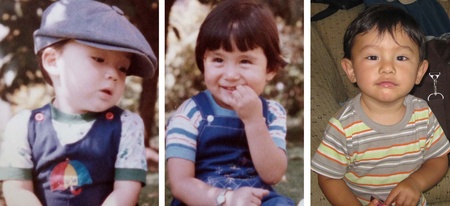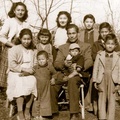The article “ Who is it about when they say 'nikkeijin'? ” by Professor Shigeru Kojima seemed necessary and illuminating to me because it develops the “Nikkei” concept and observes its components through the prism of what it was and what could be having an impact on the present because, in truth, we urgently need clarifications punctual measures that allow us, once and for all, to universalize the NIKKEI concept within its fundamental scope. Hence, my purpose is to complement what has already been pointed out by Professor Kojima with some opinions that I consider important, if thought out and implemented, if they were accepted by the great majority (Nikkei readers should decide by giving their opinion for or against. For the rest , I am only stating what I already use in my professional tasks and relationships).
To begin by making history, it is good to remember that the concept was coined in Japan at the end of the 19th century when migrations for work planted thousands of Japanese in lands located on the other side of the world (between m/m 3,000 and 18,000 kilometers away: Asia and America). The distance factor, plus the many environmental and social limitations that they encountered in their long searches, ended up becoming compelling reasons for these travelers, despite their deep-rooted intentions to return to the bosom of the family, after some years of sacrifice in the lands strange, they will not be able to materialize their desire. However, as time went by, these same Japanese ended up adopting the concept of “second homeland.” They married (mostly to local women) and started their families overseas. Thus, without rhetorical complications, “Nikkei” took shape in the world.
We know that Japanese nationalism, cultivated over millennia, has rigorously taken care of its conceptualizations and, therefore, when dekasegi or any other cause of force majeure occurs that would justify leaving the homeland behind and subsequently being prevented from returning; requires the correct application of any name related to it. Thus, it is clear that the Japanese citizen who, upon migrating, forms a family in a foreign land and acts as head under his condition as Issei, inherits to his children – by extension of the term – the quality of “Nikkei”. Therefore, their descendants make up a first, second, third or fourth generation, but always outside the categorization of nisei, sansei or yonsei, which is not appropriate to use because they are not Japanese. Their nationality is determined by the country where they are born... It seems to me that up to this point we are faced with categorical definitions that are perfectly valid.
However, the act of migration to host cultures can contain variables where what is taken for granted is not so absolute and, as a decisive anecdote, we have in Chile the case of immigrants (always unofficial at the beginning of the 20th century and others later). to the Second World War) who, after forming their families in Chilean territory and spending twenty years of uninterrupted stay, decide to return to their homeland to resume their rightful place within the family. However, they suffer the unpleasant surprise of finding a strange Japan that does not fit their memories or living conditions, in addition to peers who treat them almost similar to those of an "outsider." Conclusion, they return to Chile and here, in peace and conformity, they end up delivering their no longer so Japanese bones to the bosom of the Chilean land...
In fact, many situations of a particular nature have affected and will continue to affect these adventurers who left their homeland (also their children). Hence, I consider as invalid any attempt to impose a priori nominations that have not considered: a) the distance and geography factor in relation to Japan, b) the time necessarily spent outside the original land, c) the weight of that local culture converted into a fine and persistent drizzle that can penetrate deeply and d) the significant repercussions that could weigh on any “returnee” in the face of the inevitable and forced cultural and social transformations experienced by Japan over the generations.
At the same time, at the Nikkei level, there are only two clear conditions to be one: 1) Have at least one Japanese parent and 2) Be born outside of Japan. All other intentions to add to the concept components outside of these requirements should only be specified by criteria of “courtesy” or “closeness” (wife of the Nikkei without Japanese blood, admirers and collaborators of Japanese culture, other relatives, etc.). In this regard are the suggestions made by COPANI 2011 in New York.
Hence, in my view, within these conditioning bases, the Nikkei concept should be accepted without further delay: a) identifying all those Japanese migrant who, due to deculturation, lose part of their original identity. Which leads him to become a particular “Japanese Nikkei” and b) all his direct descendants from overseas who, because they are carriers of his genetic and cultural heritage, become Chinese Nikkei, North American Nikkei, Australian Nikkei, etc.
Finally, let us say that each Nikkei—no matter where they are located on the map—must recognize themselves as such and fully seek their fulfillment based on that almost mysterious and ancient inherited Japanese genetics, converted into a relevant plus for the development of the “being.” nikkei” and in achieving their real life goals. Personally, I feel proud and perfectly identified with the name “Chilean Nikkei” first generation 1 .
Note:
1. As the son of an Issei father, I am the first generation within the Nikkei generational categorization. The Nikkei's children become the second generation, the grandchildren the third, and so on.
© 2018 Ariel Takeda






